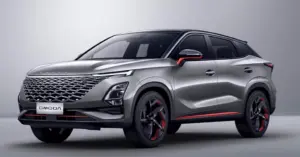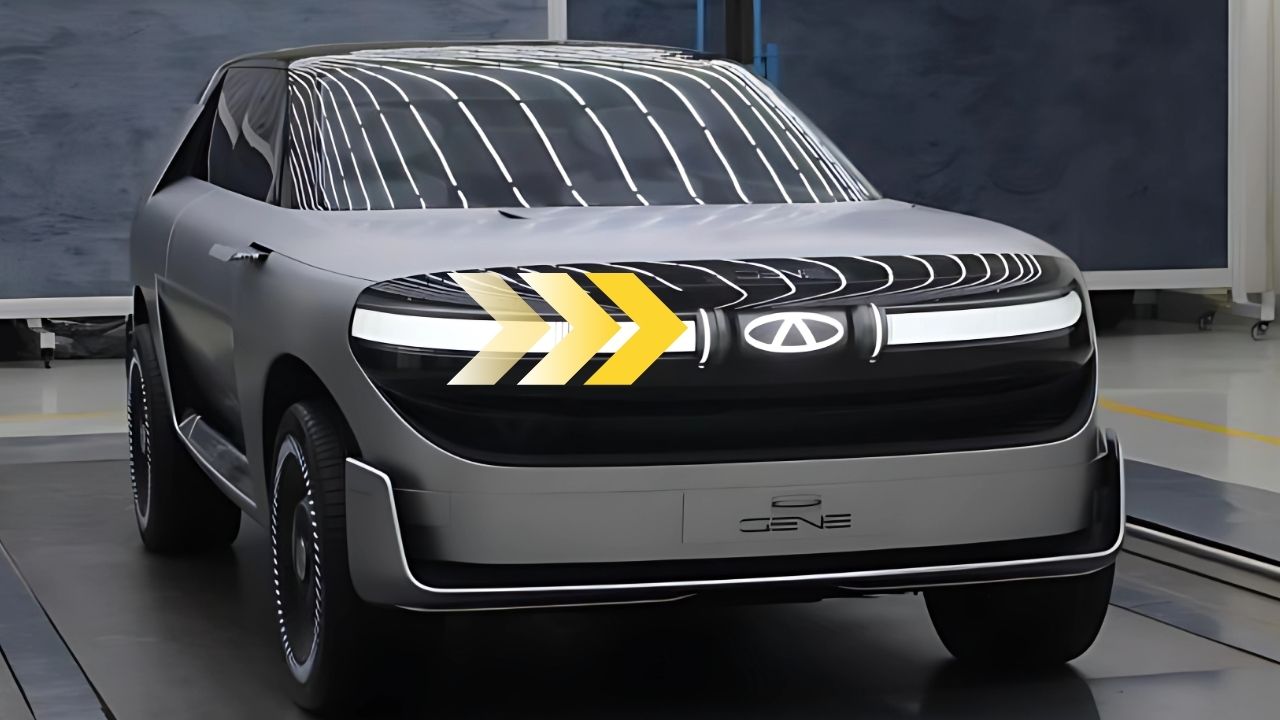Australia’s automotive landscape is about to get a major shake-up. Chery and its sister brand Omoda Jaecoo are bringing a impressive lineup of SUVs to our shores throughout 2025.
These aren’t just any ordinary vehicles either. We’re talking about advanced hybrid technology, striking designs, and competitive pricing that could change how Aussies think about Chinese cars.
Let me walk you through everything that’s coming. Trust me, there’s quite a bit to get excited about!
Chery’s Big Hybrid Push with Updated Tiggo Models
Tiggo 7 and Tiggo 8 Getting the PHEV Treatment
The biggest news from Chery? Their popular Tiggo 7 Pro and Tiggo 8 Pro Max are getting completely refreshed this July. But here’s the kicker – they’re also introducing plug-in hybrid technology for the first time.
These updated models will likely drop the “Pro” from their names. So we’ll simply have the Tiggo 7 and Tiggo 8 moving forward.

Impressive Hybrid Technology
The new Super Hybrid system is seriously impressive on paper. It combines a 1.5-litre turbocharged engine with an 18.3kWh battery pack and clever transmission system.
Early specs suggest we’ll see around 255kW of power and 525Nm of torque. That’s serious performance territory!
Range That Actually Matters
Here’s where things get interesting for daily driving. Chery claims over 90km of electric-only range – that’s enough for most people’s daily commute without using a drop of petrol.
The total driving range? They’re saying it’ll exceed 1200km. Perfect for those weekend getaways to the coast or mountains.
Fast Charging Support
Unlike many plug-in hybrids, these Chery models support DC fast charging. We’re talking 30 to 80 percent charge in just 19 minutes – that’s seriously quick for a PHEV.
Most competitors make you wait hours using standard AC charging. This could be a real game-changer for longer trips.
Omoda C9: The Flagship That Could Change Everything
August Launch for Premium SUV
The Omoda C9 arrives in August as the brand’s flagship offering. This isn’t just another mid-size SUV – it’s positioned to take on some serious competition.
Think Mazda CX-60 territory, but with potentially better value and more advanced tech. The C9 measures 4775mm longand sits on a 2800mm wheelbase.
Tri-Motor PHEV Powerhouse
The C9’s party trick? A tri-motor plug-in hybrid system that sounds absolutely mental on paper. We’re talking about one motor at the front, another in the transmission, and a third at the rear.
Combined output could hit 440kW and 915Nm of torque. Chery claims a 0-100km/h time of 4.9 seconds – that’s sports car territory!
Impressive Electric Range
Battery options might include 19.43kWh or 34.46kWh packs. The larger battery could deliver up to 150km of electric-only driving on the WLTP cycle.
That’s genuinely useful for daily driving without ever needing the petrol engine. Perfect for city commuting and short trips.
Chery Tiggo 9: The Budget-Friendly Alternative
Third Quarter Launch
Coming between July and September, the Chery Tiggo 9 offers a more affordable take on the large SUV formula. It’s essentially the same vehicle as the Jaecoo J8 but with different styling and features.
The focus here is on family buyers who want space and value. Don’t expect quite as many luxury touches as the J8, but it should still be well-equipped.
Engine Options Still Unclear
Chery hasn’t confirmed specifications yet. We might see both petrol-only and plug-in hybrid versions, plus potentially seven-seat configurations.
The petrol engine would be that familiar 2.0-litre turbo making 183kW and 385Nm. The PHEV setup combines a 1.5-litre engine with electric motors for 280kW total output.
Pricing Strategy
Here’s where things get interesting. The J8 starts at $49,990, while Chery’s current flagship Tiggo 8 Pro tops out at $43,990.
Expect the Tiggo 9 to slot somewhere in between. That could make it seriously competitive against established players like the Kia Sorento or Hyundai Santa Fe.
Tiggo 4 Goes Hybrid for Better Efficiency
Australia’s Cheapest SUV Gets Electrified
The Tiggo 4 currently holds the title of Australia’s most affordable SUV at just $23,990 drive-away. Soon, it’ll get a hybrid version that promises much better fuel economy.
This hybrid system pairs a 1.5-litre naturally aspirated engine with a 1.83kWh battery and 150kW electric motor. It’s not a plug-in, but rather a traditional hybrid setup.
Impressive Efficiency Gains
Fuel consumption drops from 7.3L/100km to just 5.4L/100km – that’s a significant improvement for daily running costs. The 0-100km/h time also improves from 10.6 seconds to 9.4 seconds.
Range should exceed 1000km on a single tank. Perfect for those who do lots of highway driving or live in regional areas.
Jaecoo J5: The Small SUV with Big Ambitions
Compact Crossover Coming Soon
The Jaecoo J5 measures around 4380mm long – similar to a Hyundai Kona. It shares the blocky, rugged styling of its bigger J7 sibling but in a more city-friendly package.
Key features include a 13.2-inch touchscreen and what Jaecoo claims is the largest panoramic sunroof in its class at 1.45 square metres. That’s genuinely massive for a small SUV.
Petrol and Electric Versions
Expect a turbocharged 1.6-litre petrol engine for the standard version. But there’s also an electric variant coming with 155kW of power and 288Nm of torque.
The EV version gets a 60.9kWh battery providing 470km of range on the NEDC cycle. That should translate to around 350-400km in real-world Australian conditions.
Omoda 7: The Wildcard Entry
Timing Still Being Finalised
The Omoda 7 is definitely coming to Australia, but exactly when remains unclear. Omoda Jaecoo Australia’s commercial officer Roy Muñoz confirmed it’s “on the cards” but timing depends on market conditions.
They don’t want to overwhelm buyers with too many new models at once. Smart strategy, really – better to get each launch right than rush everything to market.
RAV4 Territory Competition
When it does arrive, the Omoda 7 will target the popular mid-size SUV segment. Think Toyota RAV4 and Mazda CX-5territory – one of Australia’s most competitive markets.
Early indications suggest it’ll offer plug-in hybrid technology as a key differentiator. Most competitors in this space still rely on traditional petrol engines or basic hybrids.
What This Means for Australian Car Buyers
More Choice at Competitive Prices
This wave of new SUVs gives Australian families significantly more choice. Chery and Omoda Jaecoo are clearly serious about establishing themselves here long-term.
The combination of hybrid technology, competitive pricing, and comprehensive warranties could shake up some established players. Traditional brands will need to respond.
Hybrid Technology Becomes Mainstream
Perhaps most importantly, these launches make advanced hybrid technology accessible to average buyers. No longer will PHEVs be limited to premium German brands charging $80,000+.
Being able to drive 90+ kilometres on electricity for daily commuting, then switch to hybrid mode for longer trips, offers genuine flexibility. Especially with fast-charging support included.
Frequently Asked Questions
Q: Are these Chinese SUVs reliable enough for Australian conditions? A: Chery offers comprehensive warranties and has been testing vehicles extensively in Australian conditions. The brand has been here for several years now with generally positive feedback.
Q: How much will the new hybrid models cost? A: Exact pricing hasn’t been announced, but expect competitive positioning against established rivals. Chery typically undercuts mainstream brands by $5,000-$10,000.
Q: When can I actually buy these new SUVs? A: The Tiggo 7 and 8 PHEVs arrive in July, followed by the Omoda C9 in August and Tiggo 9 in Q3. Other models will follow throughout late 2025.
In Summary
2025 is shaping up as a breakthrough year for Chinese automotive brands in Australia. Chery and Omoda Jaecoo aren’t just bringing more SUVs – they’re bringing genuinely advanced technology at accessible prices.
The combination of plug-in hybrid powertrains, impressive electric ranges, and competitive pricing could seriously disrupt the Australian SUV market. Established brands have been warned.
Whether you’re after a small city runabout or a large family hauler, there’s likely something in this lineup worth considering. The only question is whether Australian buyers are ready to embrace these Chinese alternatives.
One thing’s certain – the SUV market just got a lot more interesting!

